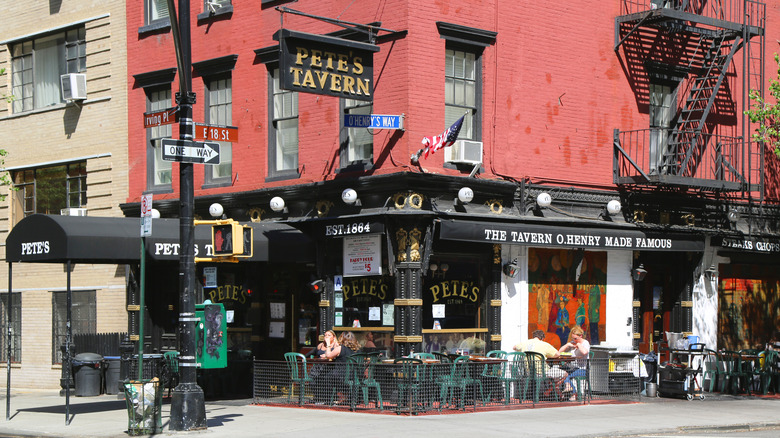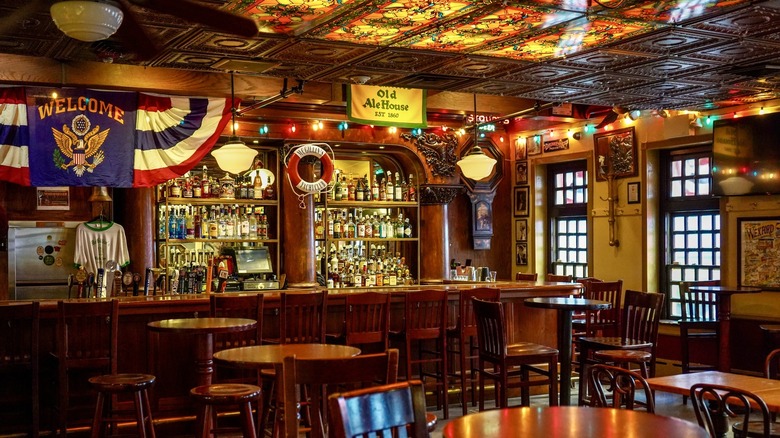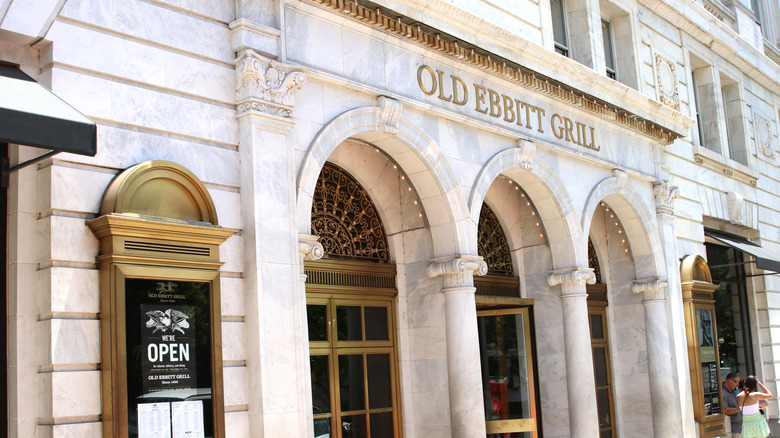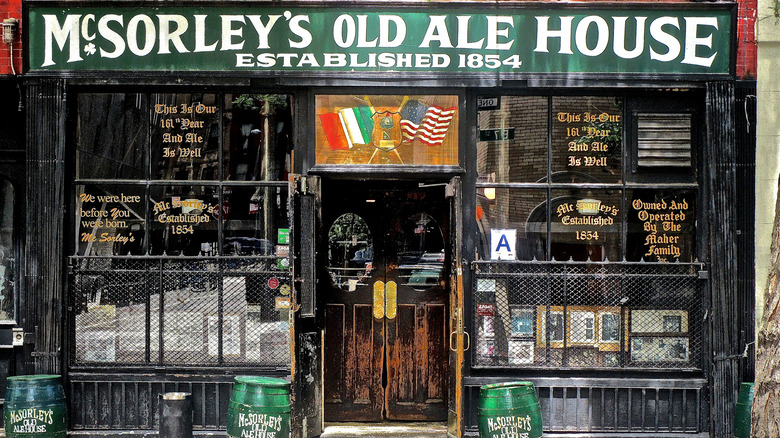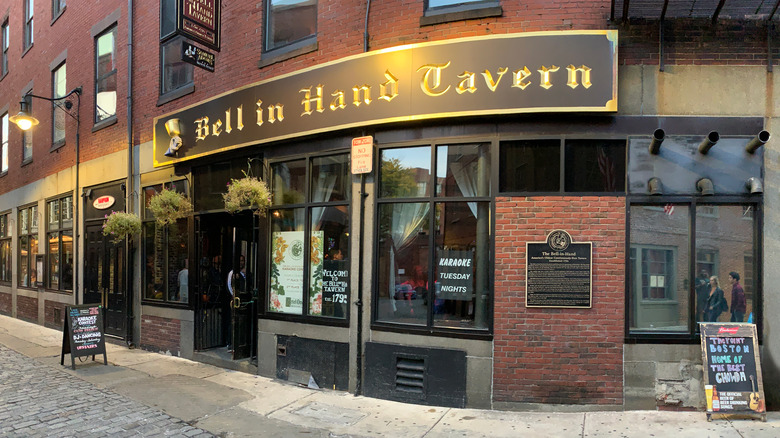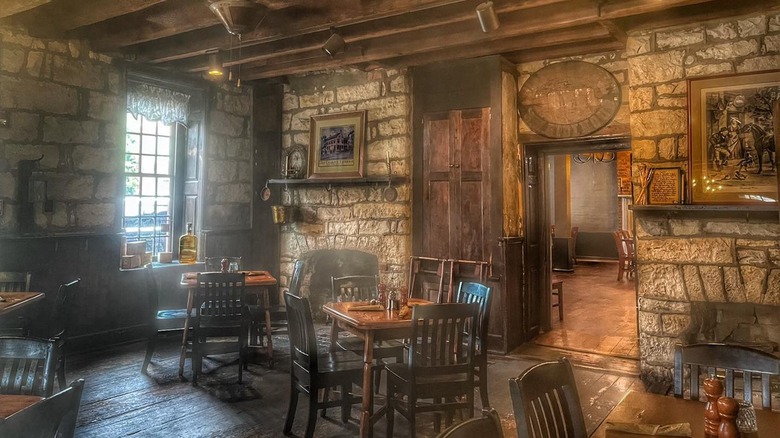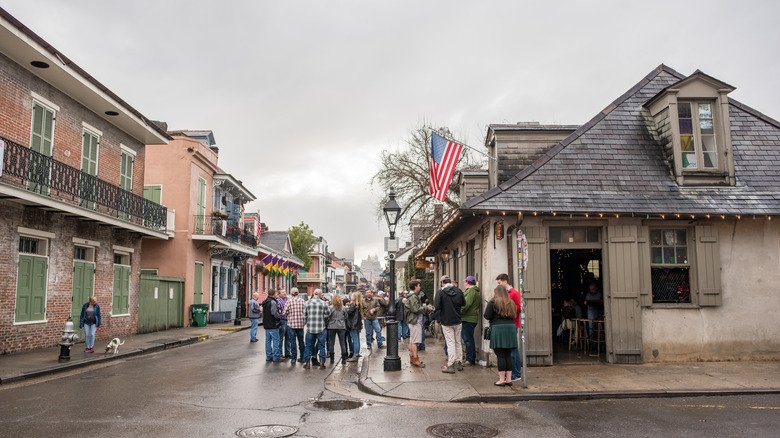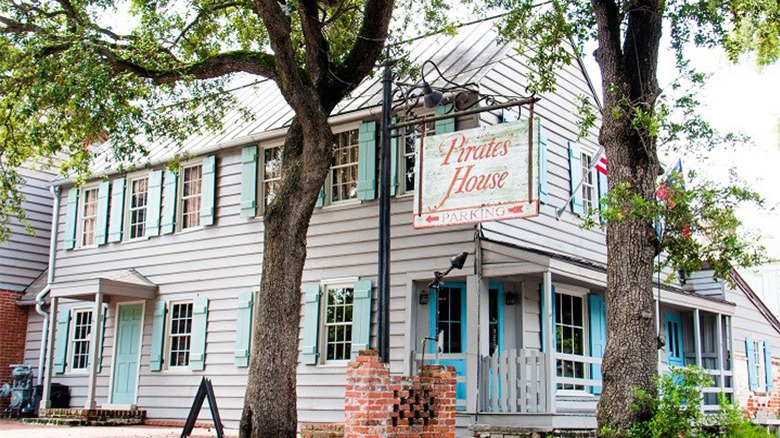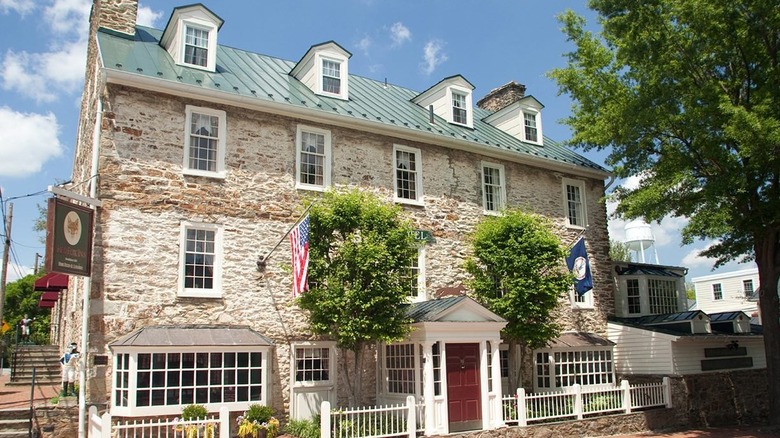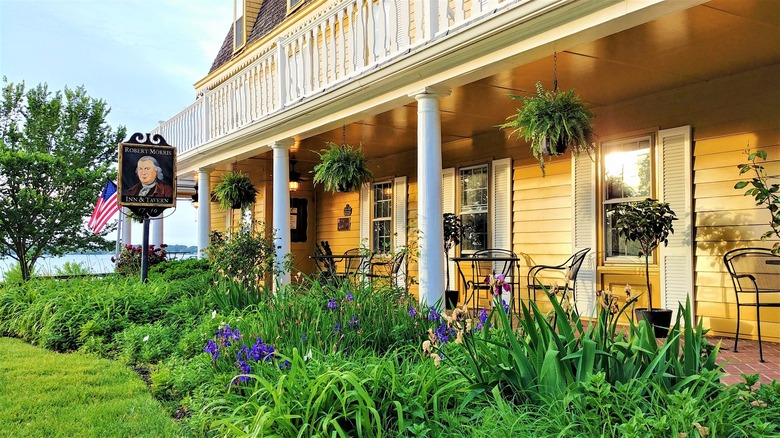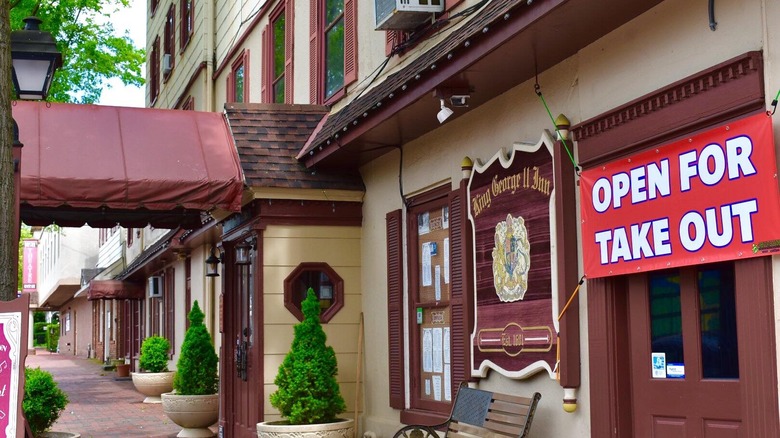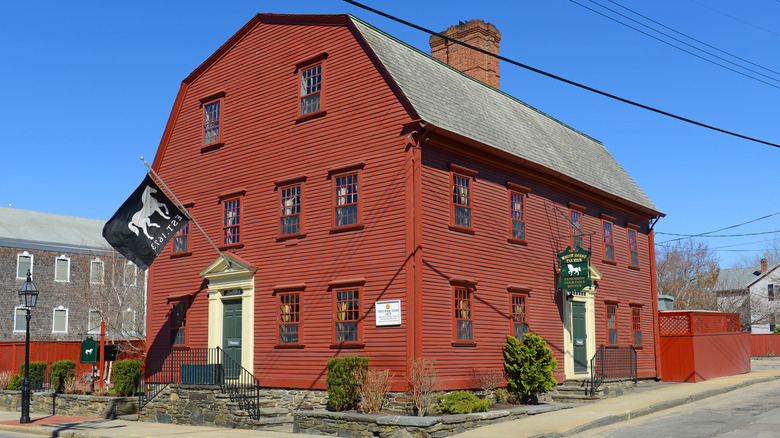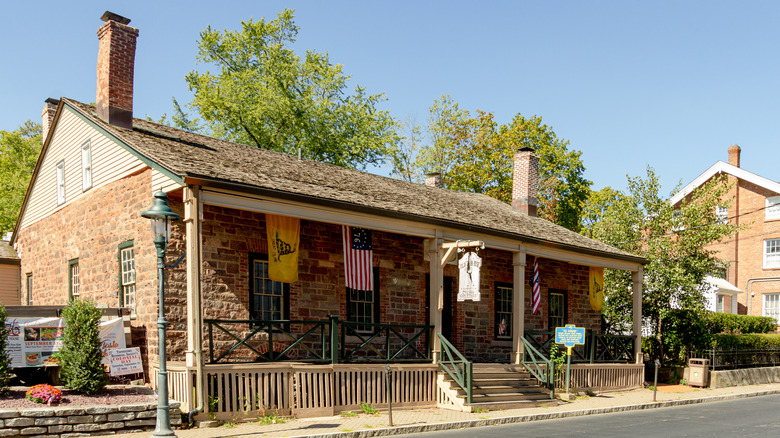13 Oldest Pubs In The US Worth A Visit
You can call it a pub, tavern, bar, whatever, but no matter what you call the place locals to gather to eat, drink, and be merry, you can rest assured that establishment plays an important role in society.
According to Christine Sismondo in an interview with Smithsonian Magazine, the common American bar should be given more credit for its contribution to American history and democracy. This is the place where conversations are started, information is shared, and ideas are spread. These hubs of discussion may oftentimes revolve around the last night's game or the latest viral video, but, at one point in time, they hosted the development of the hunger for American independence.
As long as there have been people, there have been places to drink. America is no exception, and, fortunately for us, some of the establishments that predate the establishment of the United States itself are still up and running. For those of you keen on your history, drink, or a perfect mix of the two, here are the oldest pubs in the U.S. worth visiting.
Pete's Tavern, 1864 - New York, New York
The first spot on this list dates all the way back to the Civil War era. Pete's Tavern was originally founded in 1864 and claims to be New York City's oldest original bar and restaurant. While this accolade is actually held by another bar, Pete's Tavern is still a New York institution that, despite undergoing several changes in its lifespan, remains a passage through time.
The building Pete's tavern calls home was built in 1851, originally for the Portman Hotel where the first drinking establishment opened in 1864. It was bought by Tom and John Healey in 1899, became "Healey's Cafe," and was eventually sold to Peter D'Belles in 1922, who changed the name to what it is today. Although the bar and restaurant saw many changes in ownership in its early life, the 40-foot-long rosewood bar, back bar, tin ceiling, tile floor, booths, and cabinets are all original fixtures that were put in place in 1864.
With the passing of Prohibition in the 1920s, Pete's Tavern's history took an interesting turn. Because it is located just three blocks from Tammany Hall, politicians turned a blind eye to the bar and went along with its disguise as a florist. Decorated with flowers in the storefront, those looking for a drink walked to the side door, gave the correct password, and entered through a fake refrigerator. Pete's Tavern is located in Gramercy Park on East 18th street and Irving Place.
McGillan's Old Ale House, 1860 - Philadelphia
McGillan's Old Ale House opened between the Liberty Bell cracking and Philadelphia's City Hall opening. That's how historic this pub is. Opened by Catherine and William McGillan back in 1860, originally named the pub the "Bell in Hand Tavern," but their raising 13 children upstairs above the bar soon contributed to customers just calling the place "McGillan's." The pub was an instant neighborhood hit and grew to own the oyster house next door and the back alley. But when Prohibition was enacted, the upstairs was converted into a restaurant and McGillan's began serving food and ice cream. Business in the bar was suspended until 1933 when Catherine McGillan finally reopened the front doors of the pub to reinvigorate its legacy.
This pub sits in the heart of Philadelphia, just two blocks from City Hall, which opened in 1871. Since City Hall's opening, every liquor license granted by City Hall since has been hung up on the walls of McGillan's. That, as well as an iconic collection of storefront signs, including ones belonging to Woolworth's five-and-ten that opened in 1879, the original Gimbel's that opened in 1887, and John Wanamaker Department Store's (now Macy's).
Today, McGillan's Old Ale House remains an iconic piece of Philadelphia. It has been given countless awards and recognition, including one of the best Irish pubs in the U.S. by Travel Channel, and "Best Place to Watch the Game" by Philadelphia Magazine.
Old Ebbitt Grill, 1856 - Washington D.C.
The Old Ebbitt Grill in the U.S. capital has called a number of different locations home in its lifetime, but this bar restaurant was originally founded back in 1856. Since then, the Old Ebbitt Grill has served an endless list of American historical figures including presidents Ulysses S. Grant, Grover Cleveland, Theodore Roosevelt, and Warren Harding. It even served as the residence of President McKinley during his tenure as a U.S. Congressman.
This institution of Old Ebbitt Grill, known as the city's oldest saloon, was originally converted from a boarding house when William E. Ebbitt purchased it. Since moving location multiple times, the exact location of the original bar is uncertain but is believed to be on the edge of D.C.'s Chinatown. Other locations that have housed the Old Ebbitt Grill include what is now the National Press Building and a converted haberdashery. After being taken over entirely in the 1970s, it was finally moved for the final time in 1983, this time in what was once the B.F. Keith's Theatre.
The Old Ebbitt Grill has always brought its history with it, which is evident in the decor of its latest location. The Victorian-style interior evokes the bar's foundation in turn-of-the-century Washington. The Old Ebbitt Grill you'd visit today may not be the original, but this bar and restaurant are still worth a visit. Maybe not for its physical history, but more for its cultural history.
McSorley's Old Ale House, 1854 - New York, New York
One of the oldest pubs in New York City, McSorley's first opened in 1854. John McSorley was born in Ireland, but due to the potato blight of the 19th century, he immigrated to the U.S. in 1851. Three years later, he opened an alehouse called "The Old House at Home." The ale house was a success and was able to survive Prohibition. It was in the 1940s, however, when McSorley's became a New York staple.
A writer for The New Yorker magazine, Joseph Mitchell, visited McSorley's in 1940 and wrote a story about the pub, inspiring coverage by other publications, including Life magazine. This coverage boosted business but didn't change the rule that women were still not allowed in McSorley's.
After Prohibition was repealed, most establishments began admitting women, but McSorley's retained their philosophy of "Good Ale, Raw Onions, and No Ladies." Even after Dorothy O'Connell Kirwan took over as owner when her father died, she kept her promise to her father that she would never step inside the place. The promise was kept until a court ordered McSorley's to end this rule, and the first woman was served in 1970.
This stained history of McSorley's shouldn't keep you from visiting, however. Although the ridiculous rule of not allowing women went on until not too long ago, enjoying a pint there today, no matter your gender, should be seen as a celebration of the togetherness pubs in general represent.
Bell In Hand Tavern, 1795 - Boston
The Bell in Hand Tavern is a popular Boston tourist destination, and a pint of ale at this pub is a mandatory venture on your Beantown itinerary. This spot was founded in 1795 by Jimmy Wilson, who decided to open the tavern after he retired from his job as the town crier. He was proud of the profession that he held for over 50 years, which is where the pub's name comes from. Wilson spread some of the most profound news to the townspeople of Boston, including the event of the Boston Tea Party and the birth of the United States itself.
Wilson was not fond of liquor, so decided only ale would be served at his new tavern, and the ale served was originally done so in two separate glasses. One glass was for the ale, and the other was for the froth because the beer was so thick. This was the preferred style of the time, however, and the Bell In Hand's ale made it a great success almost immediately. Maybe the most prolific characteristic of Boston's oldest tavern, however, is the customers it drew — which basically included everyone. The Bell In Hand welcomed everyone from lawyers and city officials to students and journalists. Everyone was welcome at the Bell In Hand, and over 200 years later, that same sentiment holds true.
Talbott Tavern, 1779, Bardstown, Kentucky
The Talbott Tavern was founded in 1779 and is said to be the oldest stagecoach stop in the U.S. It is perfectly placed at the point where the North, South, East, and early West coincided. Travelers would stop here for food and drink before saddling new horses for the long, uncertain journey out west. The Talbott Tavern holds a very special role in the Westward expansion, and therefore in American history.
If you have not already presumed, the Talbott Tavern's location in Bardstown, Kentucky also makes it an icon in the world of bourbon. William Heavenhill, who went on to found the legendary Heavenhill Distillery, was a frequenter at the Talbott Tavern for lunch, and William and Leslie Samuels, the founders of Maker's Mark were also valued customers. Since its construction in the 1770s, there have been various owners of the inn and tavern, but probably none is as well known as T.D. Beam, brother of Jim Beam. He purchased the Talbott Tavern in 1916 and ran it for a decade.
Unfortunately, the original, humble, charming Flemish stonework of the Talbott Tavern was severely damaged in a fire in the late 1990s, but repairs were done and the tavern reopened soon after. This is one of the oldest buildings in Bardstown, so if you ever find yourself venturing on the bourbon trail in the bluegrass state, a stop for bourbon at this tavern is an absolute must.
Laffite's Blacksmith Shop Bar, 1722 - New Orleans
The history behind Lafitte's Blacksmith Shop Bar is a bit murky. The building itself was built (probably) back in 1722 and is believed by some to be the oldest structure used as a bar still in operation in the U.S. However, this is unable to be confirmed. What is certain is the brothers Pierre and Jean Laffite owned the place between 1772 and 1791 as a front for their smuggling operation, according to National Trust for Historic Preservation. The Lafitte's would steal goods from ships in the gulf and bring them into New Orleans to avoid taxes and fees. Eventually, they were caught and arrested but earned their freedom by providing a tip on a British attack, and the brothers ended up fighting in the Battle of New Orleans in 1814.
As is the case with many old establishments in New Orleans' French Quarter, Lafitte's Blacksmith Shop is believed to be haunted. Patrons have reported seeing Jean Laffite himself sipping a drink on the back of the bar as well as sitting behind the fireplace grate. Others claim to have seen a woman ghost in the upstairs mirrors or walking around the premises.
All in all, this pub is a great encapsulation of New Orleans. It has its own iconic cocktail, the grape daiquiri, a background steeped in the city's history, and ghost stories. It's really as authentic a New Orleans experience as any.
The Pirate's House, 1733 - Savannah, Georgia
Staying in the South, The Pirate's House is one of the most historic sites in the entire state of Georgia. Before Georgia was fully established as a state in the union, residents came together to create the Trustee's Garden, the very first public agricultural experimental garden in America. After Georgia joined the colonies, however, the use for the garden dissolved and the area it sat in became a residential one. Because of its location close to the Savannah River, the site was converted into an inn for traveling sailors as well as a rendezvous for pirates, which is where the inn got its name.
Today, The Pirate's House is a full bar and restaurant, serving classic Southern fare in the heart of Savannah. The building is preserved in its original state, including the blue shutters painted as such to keep spirits away. The Pirate's House was mentioned in Robert Louis Stevenson's classic "Treasure Island" and is actually the inspiration behind the novel.
Red Fox Inn & Tavern, 1728 - Middleburg, Virginia
The Red Fox Inn & Tavern, founded in 1728 in Virginia, has served some of the most iconic figures in American political and cultural history. Guests have included John F. Kennedy, Jacqueline Onannis, Paul Newman, Tom Cruise, and George Washington. The tavern has seen many owners in its lifetime, but, since the 1970s, it has been owned and operated by three generations of the same family.
Originally, the tavern was constructed as a halfway point between Alexandria and Winchester by Joseph Chinn. "Chinn's Ordinary," as it came to be called, eventually became the Beveridge House in 1812 and was expanded into 35 rooms and a wine cellar. During the Civil War, the Beveridge House served as a base for the Confederate Army. In fact, the pine bar fixture in the current Tap Room has been used as a surgeon's table in General J.E.B. Stuart's cavalry. Since the end of the war, the tavern prospered, continuing to serve food and drink to many, and was renamed the Red Fox Inn & Tavern in 1937. In 1976, it was purchased by Nancy. B Reuter has been passed down twice since her death.
Middleburg's location between Bull Run and the Blue Ridge Mountains is known in Virginia as "Hunt Country," a popular area for fox hunting. This inn and tavern carry history from the time of the American Revolution and Civil War, a rare characteristic that makes any bar that holds it well-worth visiting.
Robert Morris Inn, 1710 - Oxford, Maryland
The town of Oxford has played an important role in Maryland's economy. One of Maryland's oldest towns, it was mandated the only port of entry on the state's Eastern Shore and remained a booming trading port for nearly a century. One of the most prominent merchants of Oxford was Robert Morris, the father of Robert Morris Jr., one of America's founding fathers and finance provider for the American revolution.
After Morris's death, his house was converted into an inn and tavern and switched ownership multiple times. The building was constructed all the way back in 1710, but it did not become the inn it is today until the early 19th century. Now, guests can dine and drink in the formal Dining Room, Tap Room, and Salter's Tavern. Though it's not a traditional pub, there's a lot of history surrounding it, and you can immerse yourself in that history and get a good beer at the same time. There are 14 rooms available to book, including two waterfront rooms on the property adjacent to the inn. There aren't many opportunities to enter the home of a founding father, so any trip to Maryland deserves time reserved for a visit to this spot.
King George II Inn, 1681 - Bristol, Pennsylvania
The King George II Inn is believed to be the longest continuously-running inn in the entire United States. When Samuel Clift was granted 262 acres of land by New York's colony governor. He was only able to receive the land if he established a public house and ferry on which people can cross the Delaware River to New Jersey. Originally, the inn was named the Ferry House and didn't become the King George II Inn until just before the American Revolution.
Once the revolution began, colonial soldiers who came across the inn were so offended by the sign with their abhorred leader's name that they shot it off the building with their muskets. Additionally, Washington's famous crossing of the Delaware River was not the only crossing planned for that fateful night. One crossing, that ended up being unsuccessful, was led by General Cadwalader, who used the inn as a headquarters.
After the colonial army won its independence, the inn was renamed the Fountain Inn and ended up hosting esteemed guests including Marquis de Lafayette, John Adams, James Madison, and Millard Fillmore. In the early 20th century, the inn was renamed the King George II Inn and continues operation today and dedication to serving fine food and drink. If you get the chance to dine at the King George II Inn, you may just sit in the same chair as a U.S. President.
White Horse Tavern, 1673 - Newport, Rhode Island
Newport, Rhode Island is one of the oldest cities in America, and there is no place in the state, or maybe even the country, that captures colonial American life than the White Horse Tavern. In fact, this tavern is regarded as the oldest operating restaurant in the United States. The clapboard walls, gambrel roof, and pediment doors on the sidewalk all contribute to this establishment being a passage through time and one of the most uniquely historic dining experiences in the country.
The White Horse Tavern was first constructed in 1653 as a two-story residence and did not become a tavern until 20 years later when it was bought and converted by William Mayes Sr. The tavern did not become the White Horse Tavern until 1730 under owner Jonathan Nichols. Despite the tavern's popularity with city councilors who frequented it to conduct business and its survival both during the Revolutionary and Civil Wars, it was neglected in the early 20th century. Thankfully, investment from the Van Beuren family led to the tavern being acquired by the Preservation Society of Newport County and being restored. In 1972, the White Horse Tavern received status as a National Historic Landmark.
No trip to Newport is complete with a drink or meal at the White Horse Tavern. This place is everything that makes the city of Newport worth visiting.
The '76 House - Tappan, New York
The '76 House is not only the oldest restaurant in America, but it played a role in the Revolutionary War. Although the tavern was built in 1668, almost 100 years before the revolution, it has always been a meeting place and safe haven for patriots before and after the war. The '76 House's nickname, "Andre's Prison," comes from Major John Andre's relationship with traitor Benedict Arnold.
After Arnold was court-martialed, he grew resentful of the colonial army. He began conspiring with British general Sir Henry Clinton, who sent Major John Andre to meet Arnold. They planned the handing over of West Point from the colonies to the British, but after Andre was caught and incriminated in Tarrytown, he was brought to Tappan, New York, where George Washington established colonial headquarters. He was imprisoned in the '76 as he awaited trial, then known as Mabie's Inn. Following his trial at the Dutch Church in Tappan, Andre was sentenced to death by hanging.
Today, the '76 House is a jewel in the seemingly unassuming town of Tappan. What was once Washington's headquarters is now one of the finest restaurants in the area, but there is one thing that has never changed, and that's the establishment's commitment to making customers feel welcome and providing excellent food and drink. A trip to Tappan may be out of the way of more popular vacation destinations, but the excursion can, and should, be made by anyone in the tri-state area.

